
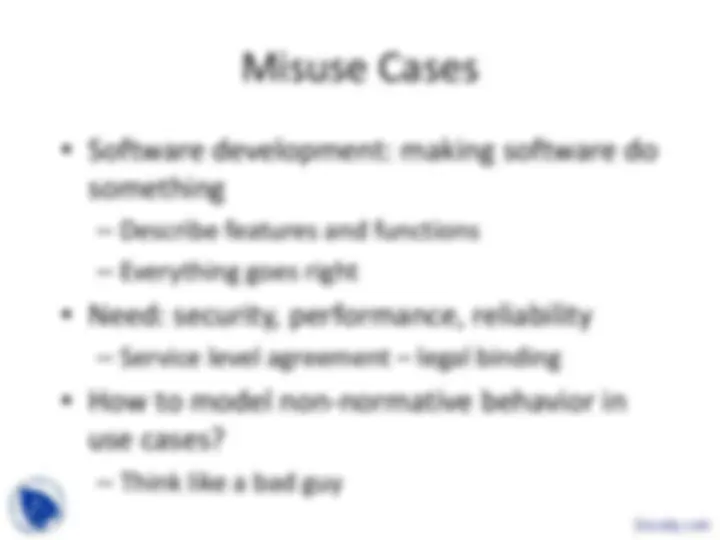
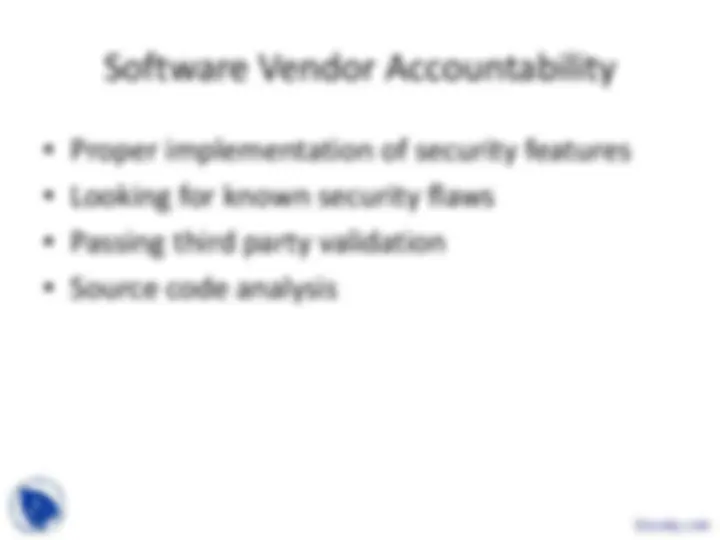
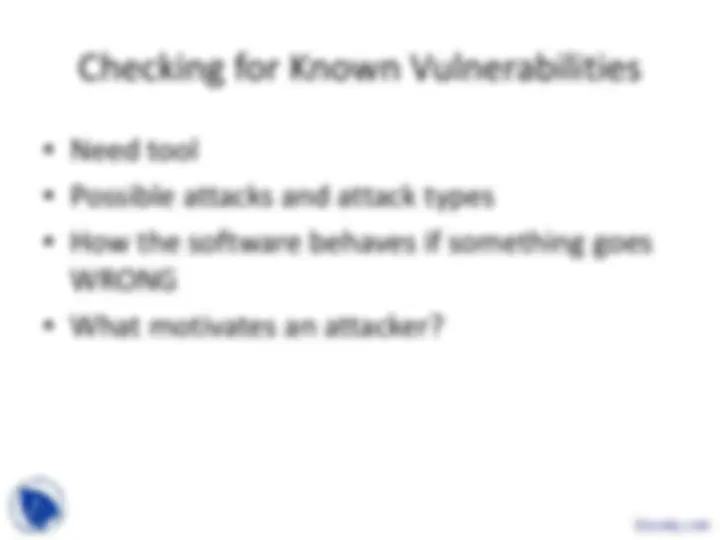
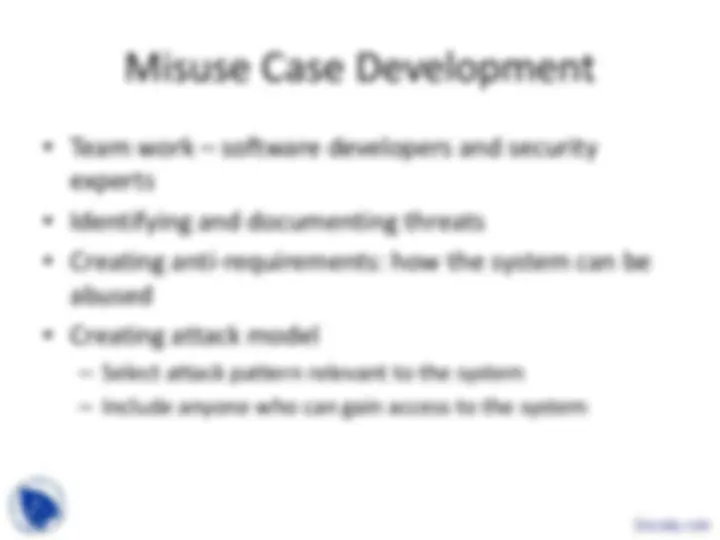
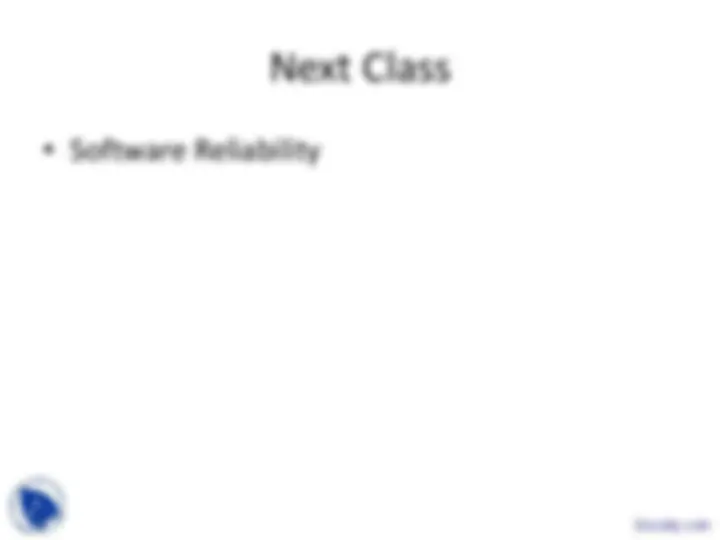


Study with the several resources on Docsity

Earn points by helping other students or get them with a premium plan


Prepare for your exams
Study with the several resources on Docsity

Earn points to download
Earn points by helping other students or get them with a premium plan
Community
Ask the community for help and clear up your study doubts
Discover the best universities in your country according to Docsity users
Free resources
Download our free guides on studying techniques, anxiety management strategies, and thesis advice from Docsity tutors
An overview of secure software development, focusing on the application of misuse cases and checking for known vulnerabilities. Topics covered include requirement and use cases, architecture and design, risk analysis, code tests and test results, feedback from the field, abuse cases, security requirements, software vendor accountability, and checking for known vulnerabilities. Misuse cases are discussed in detail, including their extension of use case diagrams, representation of actions the system should prevent, and the importance of building security in from the ground up.
Typology: Slides
1 / 9

This page cannot be seen from the preview
Don't miss anything!






Requirement andUse cases Architectureand Design Test Plans Code (^) Test ResultsTests and Feedback fromthe Field
5. Abuse cases 6. Security Requirements 2. Risk Analysis
External Review
4. Risk-Based Security Tests 1. Code Review (Tools) 2. Risk Analysis 3. Penetration Testing 7. Security Operations